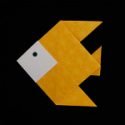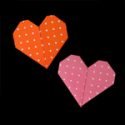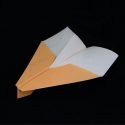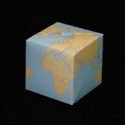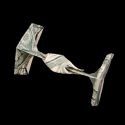Gold, Silver, and Bronze Proportioned Papers
In mathematics, art, and origami (which is a combination of both), you will sometimes come upon the concept of a gold rectangle, a silver rectangle, or a bronze rectangle. What do all these mean? These are simply names which define the specific shape of paper.
| Name Bronze Rectangle Silver Rectangle Golden Rectangle |
Ratio of Sides 1:√3 1:√2  |
Make One here here or here here or here, or here |
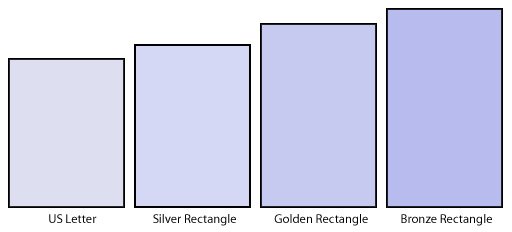
Silver Rectangles
The International Standard A-series papers are used around the world with the exception of USA and Canada. The A-series papers are examples of silver rectangles and have width to length ratios of 1 to √2. These rectangles are special because if you cut the paper in half crosswise, the two resulting pieces are also of the ratio 1:√2.
For example: A4 paper is 8.27″ × 11.69″ which is of the ratio 1 to √2. If you cut the A4 in half, the pieces are now called A5 and their sizes are 5.83″ × 8.27″ (note how the width is now the length). The ratio of A5 is also 1:√2.

You can cut the paper in half repeatedly and the resulting rectangles will all have the silver ratio. Some argue that this unique feature makes the International Standard paper sizes (A, B and C series) more versatile and superior compared to the US Letter sized paper.
Bronze Rectangles
The ratio of the width to length of a bronze rectangle is 1:√3. In origami, bronze rectangles are often used for making shapes with 30°, 60° or 120° angles. For example, origami equilateral triangles, tetrahedra, and icosahedra often use the creases from a bronze rectangle. You do not need to start with a piece of bronze rectangle; it is sufficient if you fold the bronze rectangle into the existing paper.

If you cut the bronze rectangle into thirds, the resulting pieces are also of the ratio 1:√3. In this manner, the silver and bronze rectangles are useful.
Golden Rectangle
The golden rectangle is not used very much in origami; however, it is added here for completion. The ratio of the sides is 1:1.61 or in fraction format:


The special feature of the golden rectangle is that if you remove a square from the rectangle, the left-over shape is also a golden rectangle with ratio 1:1.61.
The golden rectangle is used in art because it is thought to be visually pleasing and harmonious. The golden rectangle is also found in nature.
-
Books with Easy Origami
- Easy Origami: over 30 simple projects by John Montroll
- Origami Fun Kit for Beginners by John Montroll
- My First Origami Kit by Joel Stern
- Easy Origami: A Step-by-Step Guide for Kids by C Alexander & M Meinking
- Fun With Easy Origami (Dover Origami Papercraft)
- Origami: A Step-by-Step Introduction to the Art of Paper Folding by T Cook & S Henry
- Easy Origami For Kids Book Traditional Japanese Folding Papers Overs 20 Projects by J Wish
- Easy Origami for Kids: Over 40 Simple Origami Projects by O Brooks
Please Help
Please help by reporting broken links so that we can fix them. One easy message from you can save us hours and hours of clicking. Thanks!
-
More Origami Diagrams and Instructions…
-
These free origami instructions are made available to you by the paper folding community at large. If you have a diagram you would like to share, or if your diagram is listed here and you wish to have it removed, please Contact Us. Diagrams are intended for personal use. Copyright of the models lie with the origami creators and designers. Please contact the designer and/or creator directly for non-private usage of a model and/or artwork.









